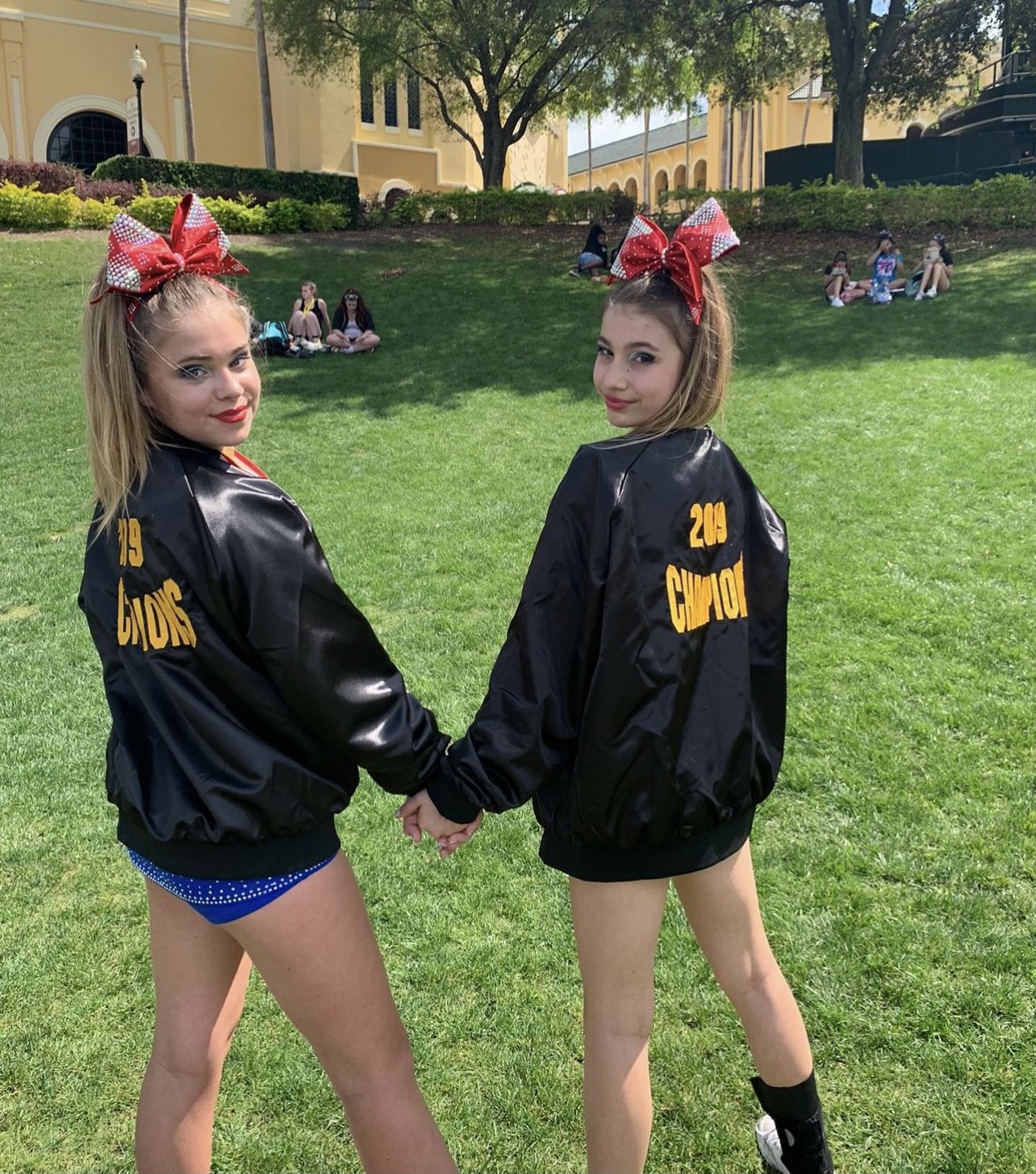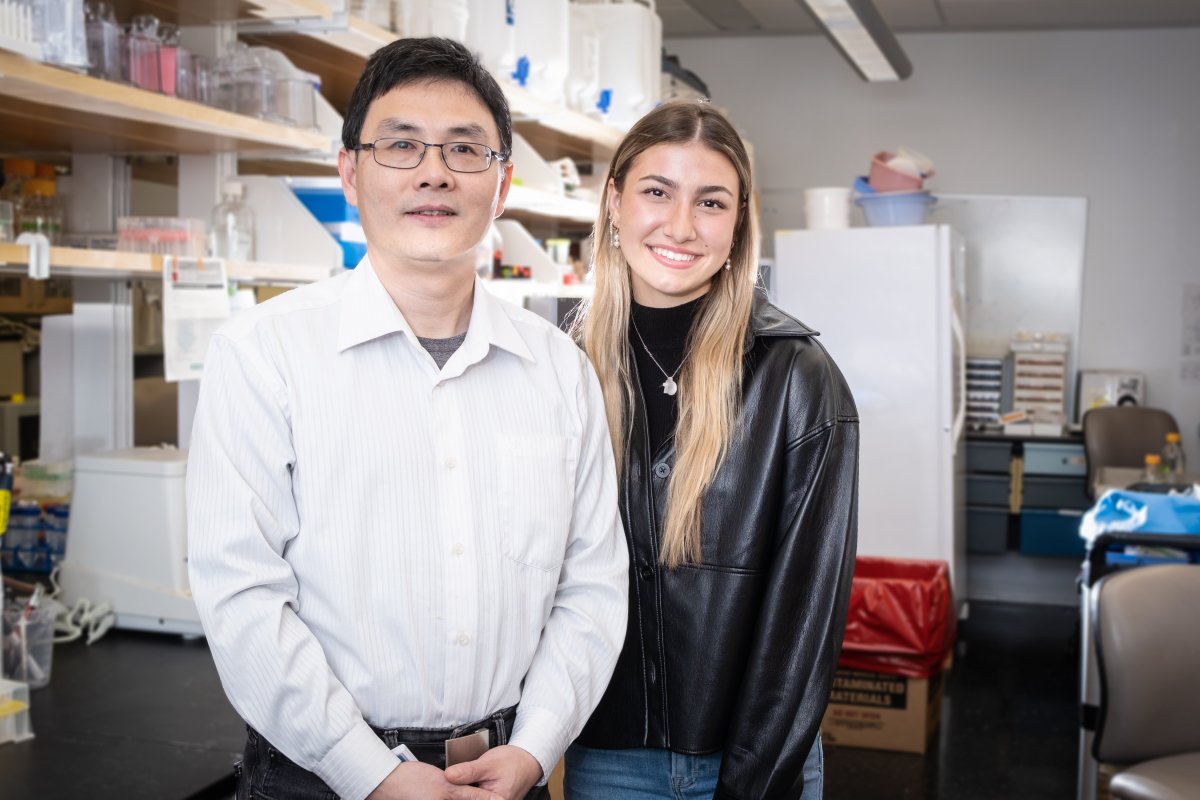A Beautiful Friendship
Staying up on the latest brain cancer research is an uncommon extracurricular activity for your average teenager, but for Siena Guarini, it’s a calling. The ambitious high schooler from Fort Lauderdale, FL, is president of the Cancer Awareness Club at her school where she leads cancer-related community service projects, brings in speakers, and shares cancer-related news with her classmates.
Guarini says she’s been interested in cancer research since her good friend Emma Sorensen passed away from stage four glioblastoma at the age of 13 in 2020.
“It’s a really rare form of cancer for kids, and it happened quickly. She fought it for about a year, but it kept getting worse. She went into the hospital that last time and never came out. Two months later she passed away,” says Guarini, “I became a lot more passionate about cancer research after that, knowing it can happen any day to anyone.”

It’s no surprise Guarini’s curiosity was piqued by a story that appeared last summer in the UVA Today Daily Report— an email she’s received since her uncle, who lives outside of Charlottesville, took her to visit the University last spring. The article described a radical glioblastoma discovery in the lab of Hui Li, PhD, a professor and scientist with UVA’s Department of Pathology and Cancer Center.
In 2020, Li and his team identified that a gene called AVIL is responsible for glioblastoma—the deadliest kind of brain cancer. This biomedical discovery was named one of the year’s biggest by the editors of the health news site STAT. Li’s lab has continued to build on this line of research, finding evidence that AVIL is also a major driver of two types of rhabdomyosarcoma, a cancer of the soft tissue that primarily strikes young children. These discoveries are offering hope for the development of new cancer treatments.
“It’s pretty groundbreaking,” says Guarini. She was so intrigued by Li’s work and its potential to help glioblastoma patients that she emailed him, explaining her background and interest in his research. She also asked if she could send him a few follow-up questions.
Li says he was surprised and honored by Guarini’s interest in his work. Rather than simply responding to her email, Li offered to have an online call.
“She’d read my research paper and asked good scientific questions. I was like, wow, this is a high school student? We had a nice conversation that lasted about an hour,” he says.
Following the call, Guarini used social media to launch a fundraiser for Li’s lab. So far she’s raised over $865; many of her classmates have contributed.
“It was really unexpected, but I truly appreciated it,” says Li. “Here is a high school student who is really busy—I have a high school student, they are really busy! For her to do something like this, it’s inspiring.”
Private donations are critical to groundbreaking discoveries like that of Dr. Li and his colleagues. Funding from big government grantors like the National Institutes of Health is typically awarded based on completed work and leads to incremental research developments. Private support, on the other hand, is vital to making large scientific leaps forward.
“Financially we rely on private philanthropy and foundations for research that is high risk and high reward. Also, grants typically come with lots of stipulations, whereas private support gives us the freedom to follow the science where it leads,” says Li.
Aside from the financial support, private donations are a morale boost for scientists toiling away in their labs, he says. “It reminds us how meaningful the work is, and it makes us want to work really hard because people are counting on us and supporting us,” Li.
Guarini has continued to stay in touch with Li and recently visited his lab in person. She is interested in attending UVA and pursuing a scientific field.
“In the future, I’d like to potentially do something with cancer research that could help people like my friend,” says Guarini.
Dr. Li hopes to remain a positive influence on Guarini’s career goals. He recognizes the impact that early support and encouragement can have on young people and recalls a particular professor who took a chance by giving him research opportunities typically reserved for more senior students. Li says, “It changed my life, and it’s how I ended up here.”
“If Siena goes on to pursue a STEM field or someday becomes a professor and makes a big discovery to cure cancer,” says Li, “I’d be so happy.”
Authored by Katherine Ludwig
Your support makes breakthroughs possible. To discuss options for investing in leading-edge science at UVA Health, please contact Chrissy Gibbons, Director of Development for Research Departments and Centers, at chrissy@virginia.edu or 434.962.9045, or call us at 800.297.0102.

